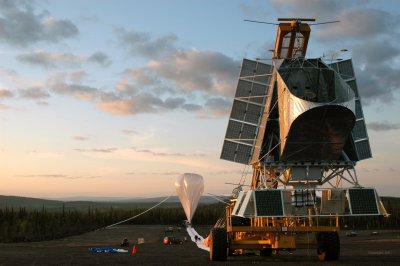Blocking Out The Sun: Viable Climate Countermeasure Or Absolute Madness?

If there’s one thing humans hate, it’s exercising willpower. Whether its abstaining from unhealthy foods, going to bed early, or using less energy and reducing greenhouse gas emissions, we’re famously bad at it. Conversely, if there’s one thing humans love, it’s a workaround. Something that lets us live our lives as the carefree hedonists we are, and deals with the sticky consequences so we don’t have to.
One such workaround for the issue of climate change is a doozy, though — blocking out the sun’s rays in order to cool our warming planet.
How Would It Work?

The basic theory is simple. By injecting aerosols — tiny little particles suspended in gas — into the stratosphere, we could reflect more sunlight back out into space, rather than letting it warm the Earth. The idea is to reduce the amount of heat coming in from the sun to make up for the extra heat trapped by higher greenhouse gas levels in the atmosphere. The concept is well understood, and has been demonstrated in the past. Events such as major volcano eruptions have lofted huge amounts of particulate matter into the atmosphere, with a measurable cooling effect as the result.
Of course, if you’re getting visions of James Bond villains or the infamous Mr. Burns, it’s important to note that the aim isn’t to blot out the sun entirely. Perpetual night would have overall negative consequences, leading to total crop failures and a resurgence of goth subcultures. Instead, the idea is to add small amounts of particulates or aerosols into the atmosphere to increase the amount of sunlight reflected by a few percent on average. The amount could be varied to maintain global temperatures in a desired range.
Why Aren’t We Doing It Already?
While the basic theory is straightforward, the devil is in the details. The climate system is a complex one, with many moving parts that all interact with each other. A small change in one area can have unexpected or undesired effects in another. Opponents to the technology fear that such changes to the chemistry or temperature of the stratosphere could have drastic effects on rain patterns, for example. This could lead to wild shifts in weather, or lead to droughts in crucial farming areas leading to major food shortages.
There’s also engineering issues to contend with. It’s one thing to create reflective aerosols in a small atmospheric region for testing; it’s another thing entirely to do so at a scale that will have real-world effects on global temperatures. Getting this right involves careful consideration of the emissions cost of procuring materials and flying them up to deliver them to the upper atmosphere. Logistical issues are a very real concern, too. It may prove that it’s simply impractical to create enough aerosols in the stratosphere to cool the earth without simultaneously spending huge amounts of energy to get them there.
Stratospheric Experimentation

To investigate these issues and learn more about the process, the Stratospheric Controlled Perturbation Experiment (SCoPEx), based at Harvard, is investigating the technology. The experiment plans to loft a balloon into the upper atmosphere, and disseminate particulates over a limited area to study the effects. Experiments will involve tests with sub-micron calcium carbonate particles, chosen for their near-ideal optical properties and expected ozone-safe attributes. Later studies may explore other materials, such as sulfates, already present in the stratosphere, though considered less optimal due to their role in ozone depletion and the amount of heat they can absorb from the sun.
However, the project has faced major setbacks in recent months. After partnering with the Swedish Space Corporation to build a test vehicle, the mooted June launch for a shakedown of the vehicle’s systems was cancelled. Local environmental groups and others oppose the project, on the basis that it could damage the Earth’s climate, and that geoengineering on such a scale should be avoided at all costs.

While the initial launch was solely to test out the balloon platform and would not deliver any test material to the atmosphere, the mission was nonetheless cancelled in the face of public dissent. The SCoPEx project has elected to undergo further public consultation in the meantime, in the hope to assuage fears, pushing back any potential launch until 2022 at the earliest.
The incident hints at the controversy around the very topic of geoengineering. Broadly, opinions fall into two camps. There are those that believe we should focus solely on reducing emissions, and that any alternative technologies are a distraction that don’t help solve the root issues at play. Others believe that the world’s slow progress at reducing emissions means that other solutions are desperately required in order to avoid the worst outcomes possible from climate change. Regardless of opinions in the broader public, research into the technology is beginning to pick up steam; the US government recently funded the National Oceanic and Atmospheric Association (NOAA) with $4 million to research the concept.
It’s likely that the debate will rage on for some time, but with money continuing to flow into the field, it’s likely we haven’t heard the last of these plans to dim the light from the Sun. It may turn out to be impractical, or even wildly disruptive to our global climate. But, until we do the science, we’re never going to know. When we do, expect to read about it here!
Post a Comment